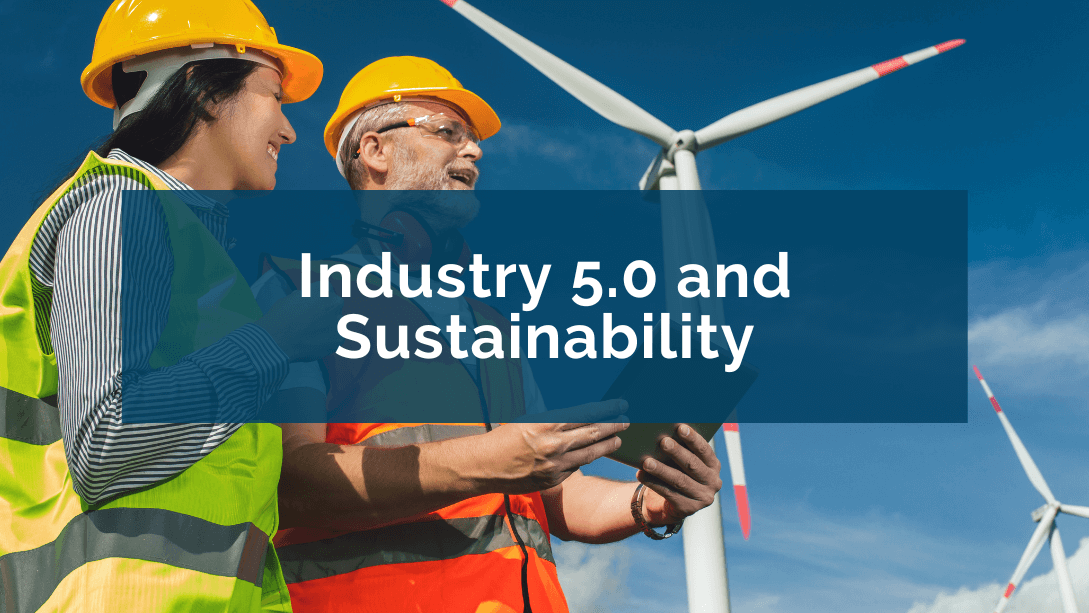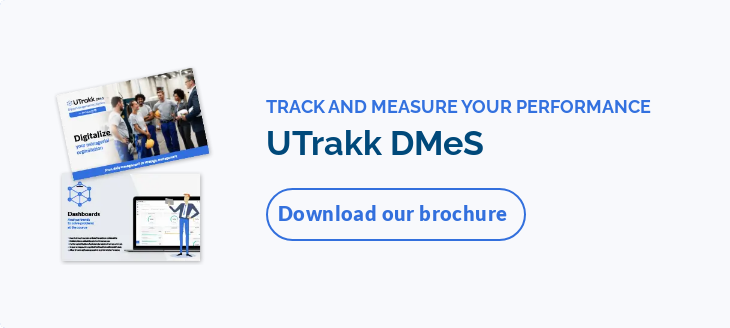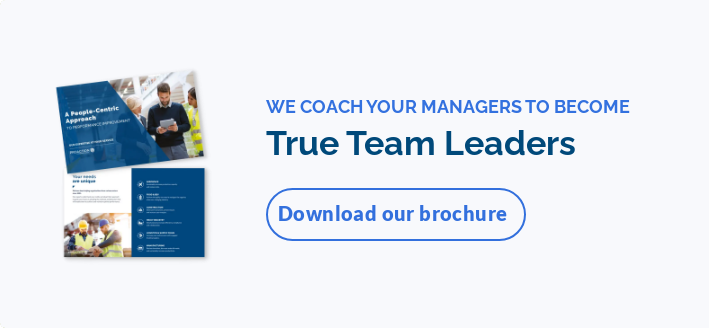Sustainability in the context of climate change
In its sixth assessment report published in 2021, the IPCC (Intergovernmental Panel on Climate Change) reiterates the urgency of reducing greenhouse gas emissions and stresses the importance of taking “immediate and long-term measures to adapt to climate change”.
The report highlights climate change's impacts on ecosystems, biodiversity, agriculture, health, and livelihoods. It also highlights the importance of equity and climate justice in mitigation and adaptation efforts.
Key objectives of the IPCC 2018 report
- Limit global warming to 34.7°F (1.5°C) above pre-industrial levels.
- Reduce global greenhouse gas emissions by 45% by 2030 compared with 2010 levels.
- Achieve net zero by 2050.
Today, exceeding 34.7°F (1.5°C) requires us to adapt to survive in tomorrow's world. In the context of our fifth industrial revolution, health and safety in the workplace are becoming a major concern. For example, factory heatwave plans could become the norm at this rate.
It has been scientifically proven that human activity causes global warming. Acknowledging this reality underlines the need to rethink our production and consumption patterns to limit the irreversible consequences for our planet and, consequently, for us who live on it.
Planetary boundaries, doughnut economics, and carbon tunnel vision
The concept of planetary boundaries, developed by Johan Rockström, defines the nine environmental thresholds that must not be exceeded if the world is to remain liveable and a “safe operating space for humanity”.
6 of the 9 planetary boundaries have now been exceeded.

Source: https://www.stockholmresilience.org/research/planetary-boundaries.html
The doughnut economics, a Kate Raworth theory, completes this approach by adding a social threshold to be reached. For Industry 5.0 to contribute to a more sustainable society, it's crucial to respect these boundaries and aim for the “safe and fair space” defined by this theory.
Focusing solely on CO₂ emissions is a trap nicknamed carbon tunnel vision. Limiting analysis to these emissions alone makes no sense. It's essential to consider all elements, weighing up the pros and cons of each decision according to a set of defined criteria such as the UN's Sustainable Development Goals (SDGs) and industry-specific criteria.
New standards to tackle this challenge
The ISSB (International Sustainability Standards Board), created in 2021 by IFRS (International Financial Reporting Standards), is establishing its own ESG (Environment, Social, and Governance) benchmark. IFRS is a private international initiative based in the United States.
In Europe, the CSRD (Corporate Sustainability Reporting Directive), part of the European Green Deal, aims for carbon neutrality by 2050 and will radically transform CSR (Corporate Social Responsibility) reporting by large companies from 2024.
Structuring key sustainability indicators in plants
Aligning industrial activities with sustainability objectives requires implementing relevant indicators. For example, the ESRS (European Sustainability Reporting Standards), part of the CSRD, provides criteria for inclusion in sustainability reports. Even a company not subject to the CSRD, such as an SME, can use these criteria to establish and deploy relevant indicators.

Source: https://www.sami.eco/blog/fiche-csrd
Key sustainability indicators for plants
Environmental
- Carbon footprint: Measurement of CO₂ and other greenhouse gas emissions.
- Energy consumption: Quantity of energy used per production unit, workshop, or machine.
- Waste management: Quantity of waste generated, recycling rate.
- Water use: Volume of water consumed, recycled, treated, discharged.
- Biodiversity: Impact of industrial activities on local biodiversity.
Social
- Occupational health and safety: Rate of occupational accidents and illnesses.
- Training, development: Training hours, diversity of subjects.
- Equity, diversity, inclusion: M/F pay gap, increase and promotion gaps.
- Employee engagement: Level of employee satisfaction and motivation.
- Community involvement: Contributions and partnerships with the local community, volunteer hours.
In Industry 5.0, sustainability indicators are a must. Just as the SRR (Synthetic Efficiency Ratio) is displayed on the screens of machines or factories, we would have indicators for energy consumption (electricity, steam), water consumption, as well as global targets to achieve, similar to the 34.7°F (1.5°C) objective set by the Paris Agreement.
Customer example: A major French industrial group’s plant
|
Company goals |
Indicators |
Key results for 2030 (to meet Paris Agreement targets) |
|
Be self-sufficient in water supply |
Volume pumped from groundwater (daily monitoring) |
-50% compared with 2023 |
|
Be self-sufficient in electricity |
Electricity consumption (daily tracking) CO₂ emissions (weekly tracking) |
-50% compared with 2021 |
Have an eco-responsible site and anti-waste behavior |
Recycling rate (daily tracking) Waste rate by product type (daily tracking) |
-40% compared with 2020 |
These indicators will have to be monitored daily, weekly, and monthly rather than reported annually in a non-financial performance report (which is already a requirement for large companies from 2025 for the year 2024).
Example of key indicator tracking in UTrakk during an active supervision tour
We used to put environmental questions in a generic bucket, measuring performance along with other Health, Safety, and Environment (HSE) metrics. In UTrakk Daily Management System (DMS), control points and indicators that needed to be monitored during active supervision tours (or floor tours) were focused on the HSE performance area.
Today, “the environment” is becoming a performance area in its own right. Control points and indicators are divided into categories such as energy, pollution, water, etc., each of which is monitored and assessed with precision.
The advantage of implementing such guidelines (like the CSRD in Europe) is that companies can measure, analyze, and act on these indicators in real time, taking immediate action to reduce their impact. This will enable all repercussions – environmental, societal, social, and financial – to be considered.
We still have a long road ahead to positively and considerably impact planetary boundaries. But the awareness of our customers and the implementation of key indicator monitoring systems are already a step forward.
Rethinking processes and business models in the manufacturing industry
Sustainable business models
How to rethink a business model for greater sustainability? How can we move towards greater sobriety when talking about Industry 5.0?
Organizations need to rethink their business models to meet these new requirements. Certain structures are emerging in this context, such as mission-driven, regenerative, perma-companies, and circular companies.
Circular economy
Representing economic activity in a circular form evokes the mythology of the eternal return, where waste or used products can find a new life after death. […] The challenge of strong circularity is not to reduce the production of wealth but to generate it differently. It is based on two pillars: the eco-design of products and equipment to extend their lifespan and intensify their uses; and the development of service activities and new models.
The circular economy transforms the traditional “produce, use, throw away” model into a sustainable “reduce, reuse, recycle” model. By closing production loops, it aims to minimize waste and maximize resource use.
Lean Manufacturing or sustainable production
Lean Manufacturing, often reduced to a simple method of improving efficiency, has taken on a new dimension in Industry 5.0. It's not just a question of eliminating waste to improve productivity but, above all, putting people and sustainability back at the center of operations and performance.
For example, by integrating sustainable lean practices, companies can reduce energy and resource consumption, improve waste management, and promote a safer, healthier working environment.
Industry 5.0 offers the opportunity to revisit the fundamental principles of Lean to create a leaner, more environmentally friendly industry.
Artificial intelligence: An asset for sustainable businesses
The integration of artificial intelligence goes hand in hand with Industry 5.0, as AI also offers innovative solutions for improving energy efficiency and reducing greenhouse gas emissions.
For example, AI algorithms can optimize production processes, predict maintenance requirements to avoid breakdowns, and intelligently manage resources to minimize waste.
However, it's crucial to ensure that AI adoption doesn't lead to energy overconsumption. Companies need to balance the benefits of this technology with responsible practices, using energy-efficient models and integrating renewable energies.

Source: https://librairie.ademe.fr/ged/6736/transitions2050-infographic-s3.pdf
Avoid greenwashing! Greenwashing involves giving an ecological image to products or practices that are not actually green. Companies must be transparent about their production processes and environmental impacts and sincerely commit to respecting planetary boundaries.
Sustainability and Industry 5.0: The role of leaders in this context
Managers must understand, apply, and give meaning to sustainability issues while mobilizing their teams. They must be supported to sustainably produce and guide their teams through these changes.
Leaders must adopt a long-term vision, integrate sustainability principles into the corporate strategy, and encourage a culture of sobriety, innovation, and responsibility.
Some current skills and behaviors can be observed:
- Inspiring leadership: Leading by example by adopting sustainable behaviors.
- Training and awareness: Training employees in sustainable practices.
- Innovation: Encouraging the development of sustainable technologies and processes.
- Collaboration: Working with stakeholders to co-create sustainable solutions.
- Monitoring and assessment: Measuring industrial performance regarding sustainability and adjusting strategies accordingly.
The importance of supporting leaders in the transition
Transitioning to a sustainable industry involves supporting leaders to adapt their professional and personal roles. They must be ready to evolve, acquire new skills, and adopt new approaches to meet sustainability challenges.
In addition, as our example of monitoring indicators during an active supervision tour demonstrates, integrating these concepts to move towards sustainable operational performance means adding an additional “layer” to the manager’s role. To support them, they will need resources and guidance on the subject (the same way they have support today on the subjects of safety or quality).
Rethinking production for a sustainable future
Industry 5.0 marks a profound transformation in the way we think of industrial production. It integrates sustainability into the heart of its processes to meet our time's urgent environmental and social challenges. Companies now have the responsibility and the opportunity to reinvent their business models, adopting practices that respect planetary boundaries and promote a more equitable society.
In this transition, industrial leaders play a central role. Their ability to inspire, innovate, and collaborate is essential to guiding teams towards more sustainable practices. It is not just about achieving environmental goals but also about creating a work environment that values the health, safety, and well-being of employees.
For Industry 5.0 to be truly sustainable, it is imperative to go beyond superficial approaches and sincerely commit to transparent and responsible actions. This journey toward sustainability requires concerted efforts, continuous innovation, and an unwavering will to transform our industrial systems for a better future.
Sources:
- ADEME. “Scenarios”. The French Agency for Ecological Transition, 2024. https://www.ademe.fr/en/futures-in-transition/scenarios/
- Aggeri, Franck. “L’économie circulaire, un modèle véritablement soutenable ?”. La Gazette de la Société et des Techniques, n° 121, March 2023. https://www.annales.org/gazette/2023/Gazette_121_03_23.pdf
- Commission de l’intelligence artificielle. “IA : notre ambition pour la France”, March 2024. https://www.info.gouv.fr/upload/media/content/0001/09/4d3cc456dd2f5b9d79ee75feea63b47f10d75158.pdf
- Eccles, Robert and Taylor, Alison. “La transformation des directeurs du développement durable”. Harvard Business Review France, February 26, 2024. https://www.hbrfrance.fr/carriere/la-transformation-des-directeurs-du-developpement-durable-60456
- European Commission, Directorate-General for Research and Innovation, Breque, M., De Nul, L., Petridis, A. Industry 5.0: Towards a sustainable, human-centric and resilient European industry. Publications Office of the European Union, 2021. https://data.europa.eu/doi/10.2777/308407
- Gaborit, Baptiste. “Tout sur la CSRD : les obligations de reporting extra-financier”. SAMI, June 7, 2024. https://www.sami.eco/blog/fiche-csrd
- IPCC. “Climate Change 2021. The Physical Science Basis”. Sixth Assessment Report of the Intergovernmental Panel on Climate Change, 2021. https://www.ipcc.ch/report/ar6/wg1/downloads/report/IPCC_AR6_WGI_FullReport_small.pdf
- Nations Unies. “Les impacts du changement climatique sur la sécurité et la santé au travail”.Nations Unies. Journée mondiale de la sécurité et de la santé au travail, April 28, 2024. https://www.un.org/fr/observances/work-safety-day
- Permaentreprise. “The model”. Permaentreprise. https://www.permaentreprise.fr/le-modele/
- Stockholm Resilience Center. “Planetary boundaries”. Stockholm Resilience Center, Stockholm University, 2023. https://www.stockholmresilience.org/research/planetary-boundaries.html
- Teulon, Hélène. Le guide de l’éco-innovation : éco-concevoir pour gagner en compétitivité. Eyrolles, 2015, 280 p.
- Winston, Andrew and Polman, Paul. “RSE : l'encadrement intermédiaire est la clé de la durabilité”. Harvard Business Review France, May 1, 2024. https://www.hbrfrance.fr/organisation/rse-l-encadrement-intermediaire-est-la-cle-de-la-durabilite-60536










